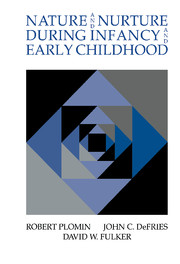Book contents
- Frontmatter
- Contents
- Preface
- Acknowledgments
- 1 Introduction
- 2 Individual differences and group differences
- 3 Quantitative genetics as the basis for a general theory of individual differences
- 4 The Colorado Adoption Project
- 5 Transitions and changes: description and prediction
- 6 Transitions and changes: genetic and environmental etiologies
- 7 Introduction to model fitting
- 8 Fitting sibling and parent–offspring models in the Colorado Adoption Project
- 9 Interactions
- 10 Genotype–environment correlation
- 11 Genetics and measures of the family environment: the nature of nurture
- 12 Conclusions
- References
- Author index
- Subject index
4 - The Colorado Adoption Project
Published online by Cambridge University Press: 15 October 2009
- Frontmatter
- Contents
- Preface
- Acknowledgments
- 1 Introduction
- 2 Individual differences and group differences
- 3 Quantitative genetics as the basis for a general theory of individual differences
- 4 The Colorado Adoption Project
- 5 Transitions and changes: description and prediction
- 6 Transitions and changes: genetic and environmental etiologies
- 7 Introduction to model fitting
- 8 Fitting sibling and parent–offspring models in the Colorado Adoption Project
- 9 Interactions
- 10 Genotype–environment correlation
- 11 Genetics and measures of the family environment: the nature of nurture
- 12 Conclusions
- References
- Author index
- Subject index
Summary
As mentioned in the preceding chapter, quantitative genetic theory recognizes that genetic and environmental influences change during development, and it proposes new concepts and methods for exploring developmental change as well as continuity. This is the core of a new subdiscipline, developmental behavioral genetics. When the field of behavioral genetics is surveyed from a developmental perspective, it is clear that the relative roles of genetic and environmental influences change during development (Plomin, 1986a). If this were not the case, there would be no need for the field of developmental behavioral genetics – the story in childhood would be just the same as that in adulthood.
The conclusion that the relative magnitudes of genetic and environmental influences change during development is founded primarily on cross-sectional comparisons across studies, for the obvious reason that most behavioral genetic studies are cross-sectional. Although the cross-sectional design can be illuminating, the lifeblood of developmental analysis of change and continuity is the longitudinal design (McCall, 1977; see also Chapter 5). The few longitudinal behavioral genetic studies, discussed below, add disproportionately to the weight of these conclusions because the same subjects are studied at different ages and, at each age, subjects are usually studied within a relatively narrow age band.
- Type
- Chapter
- Information
- Nature and Nurture during Infancy and Early Childhood , pp. 37 - 76Publisher: Cambridge University PressPrint publication year: 1988



